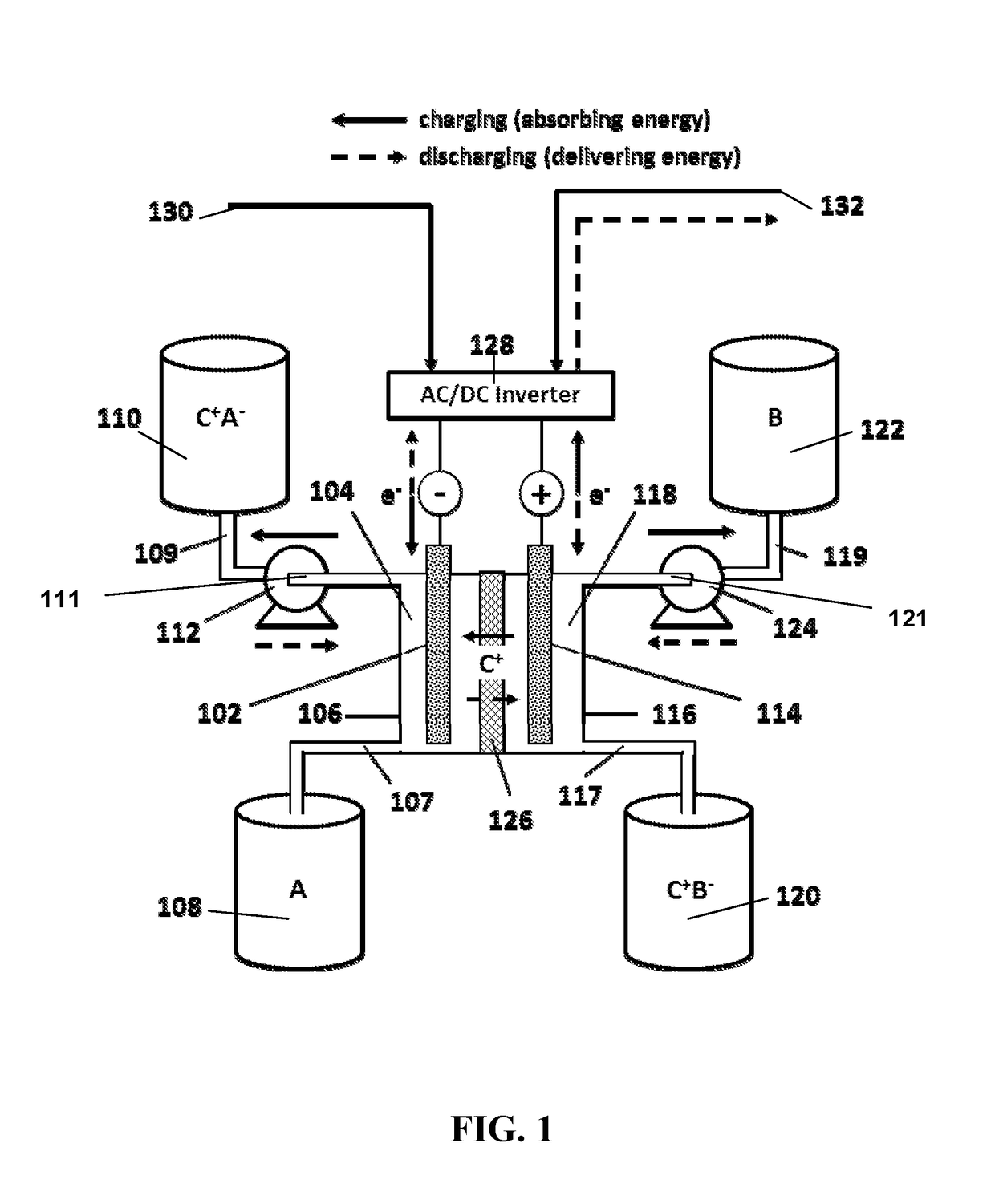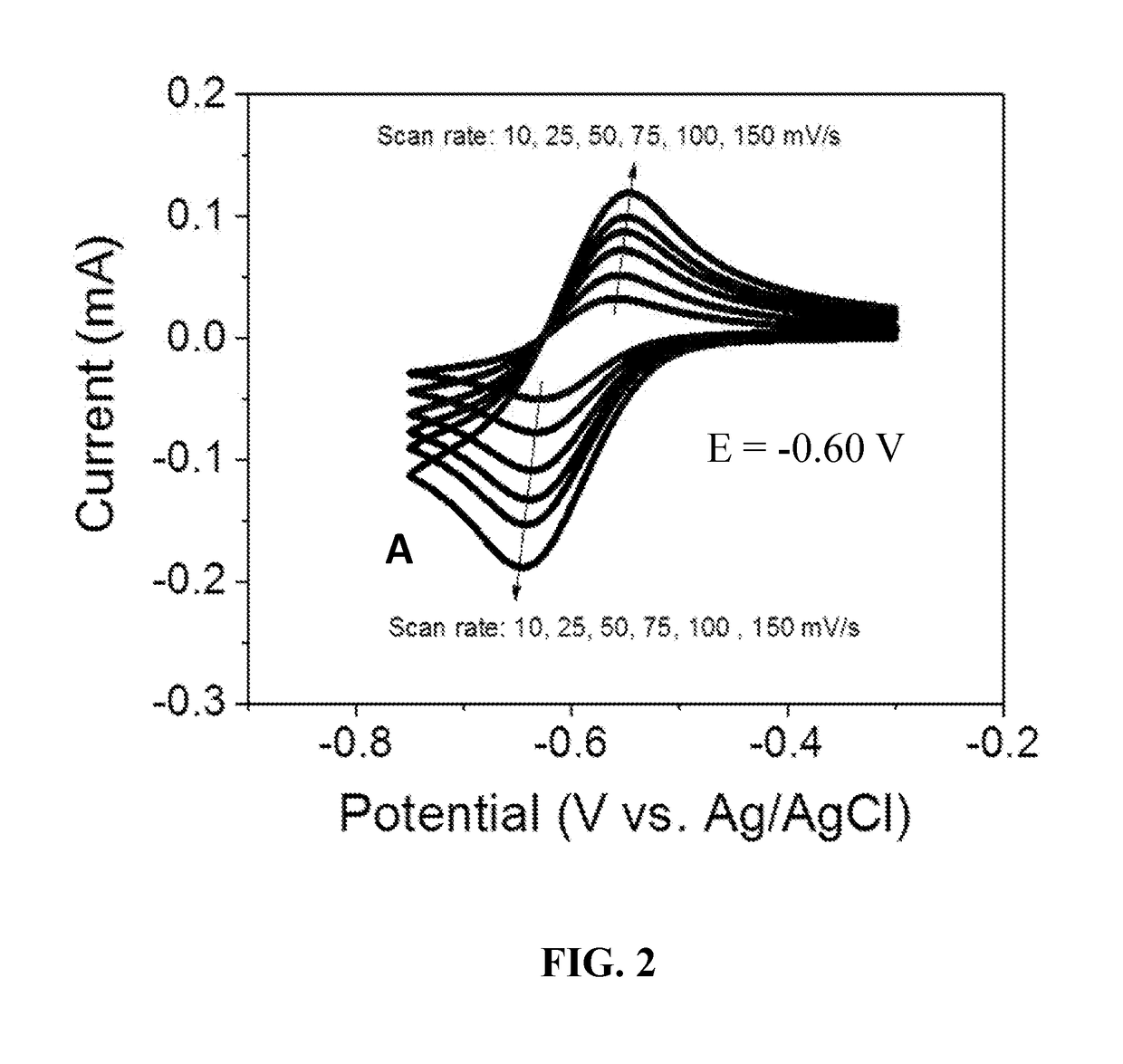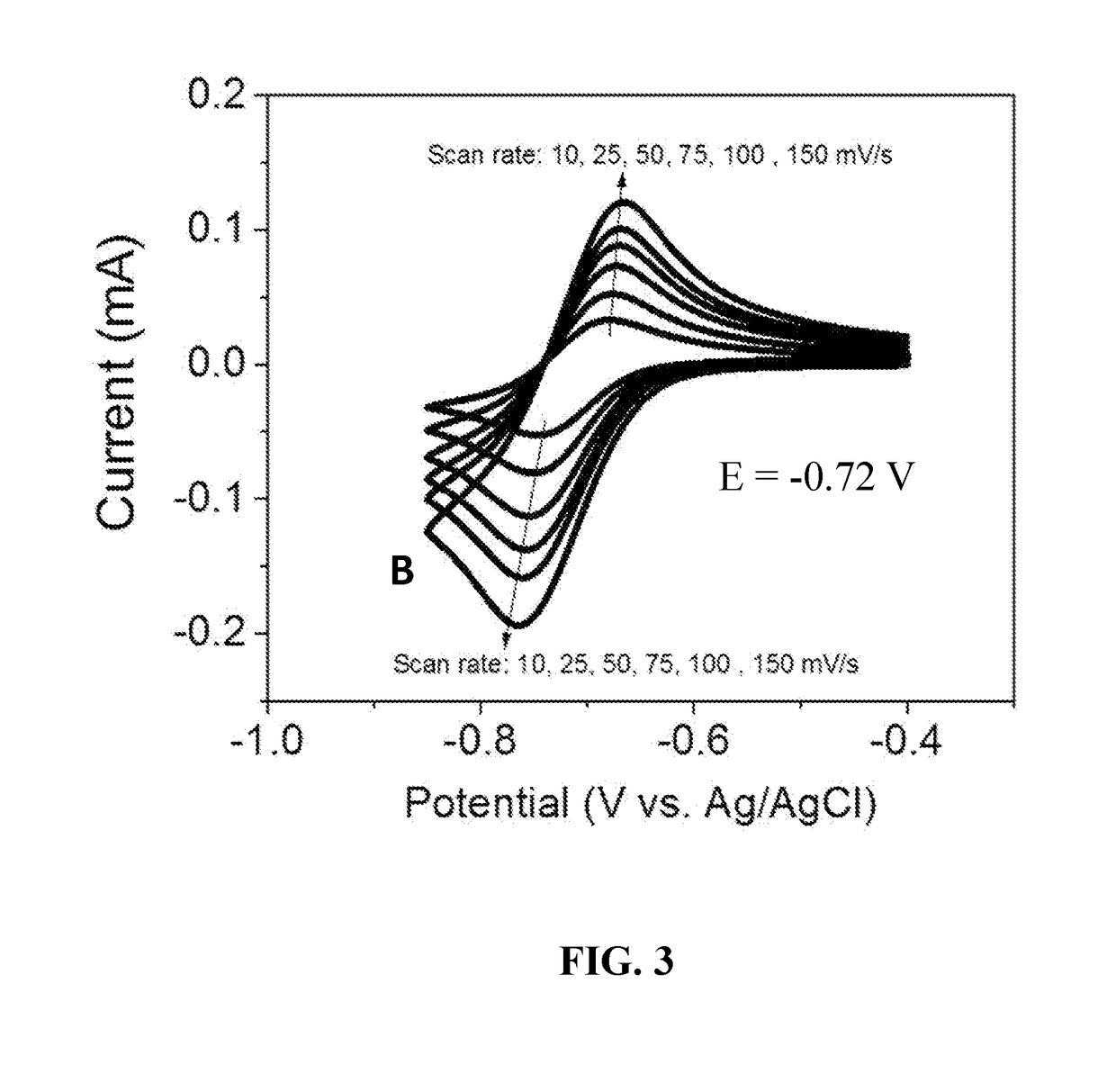Aqueous pyridinium cation-based redox flow batteries
a technology of redox flow batteries and pyridinium cation, which is applied in the direction of aqueous electrolyte fuel cells, cell components, electrochemical generators, etc., can solve the problems of aqueous flow battery designs with functional or cost-performance limitations, impede the large-scale adoption of this technology, and cannot be directly connected to the grid
- Summary
- Abstract
- Description
- Claims
- Application Information
AI Technical Summary
Benefits of technology
Problems solved by technology
Method used
Image
Examples
example 1
Preparation of Pyridinium Redox Reactants.
[0040]N,N′-(ethan-1,2-diyl)-2,2′-bipyridinedium dibromide (A) can be prepared by reaction of 2,2′-bipyridine with ethylene dibromide (1,2-dibromoethane) in 95% yield, as illustrated below.
[0041]A solution of 2,2′-bipyridyl (4.7 g, 30 mmol) in 1,2-dibromoethane (30 mL) was refluxed for 12 h, during which a precipitate was accumulated. The reaction was cooled to room temperature. The solid was filtered off and washed with acetone, hexanes, and then dried under vacuum to afford A (6.5 g, 95%) as a yellow solid. 1H NMR (300 MHz, D2O) δ 9.14 (d, J=5.8 Hz, 2H), 8.91 (d, J=8.2 Hz, 2H), 8.82 (t, J=8.0 Hz, 2H), 8.29 (dd, J =9.1, 4.5 Hz, 2H), 5.29 (s, 4H).; 13C NMR (75 MHz, D2O) δ 148.3, 147.1, 139.7, 130.7, 128.5, 52.4.
[0042]Bipyridinium compounds N,N′-(ethan-1,2-diyl)-4,4′-dimethyl-2,2′-bipyridinedium dibromide (B), and N,N′-(ethan-1,2-diyl)-5,5′-dimethyl-2,2′-bipyridinedium dibromide (C) were prepared from the corresponding methyl-substituted bipyr...
example 2
Electrochemical Evaluation of Pyridinium Redox Reactants.
[0043]The electrochemical properties of bipyridinium compounds (A), (B), and (C) were evaluated using cyclic voltammetry in a GC|Pt|Ag / AgCl three-electrode cell containing a 10 mM concentration of the redox reactant compound in 0.5 M aqueous NaCl as the supporting electrolyte. Compounds (A), (B), and (C) exhibited well-defined, reversible redox waves with redox potentials of −0.60 V, −0.72V and −0.72 V, respectively, versus Ag / AgCl (see FIGS. 2, 3, and 4). These materials had surprisingly good properties for use as anolyte redox materials, including reduction potentials that are about 70 mV lower than that of viologen (a commonly used anolyte reactant in flow batteries), good solubility in water (typically greater than 2 M), and good electrochemical stability. In addition, compounds such as (A), (B), and (C) can be readily synthesized in just one step from commercially available starting materials in high yields (up to 100% at...
PUM
| Property | Measurement | Unit |
|---|---|---|
| reduction potentials | aaaaa | aaaaa |
| cell voltage | aaaaa | aaaaa |
| cell voltage | aaaaa | aaaaa |
Abstract
Description
Claims
Application Information
 Login to View More
Login to View More - R&D
- Intellectual Property
- Life Sciences
- Materials
- Tech Scout
- Unparalleled Data Quality
- Higher Quality Content
- 60% Fewer Hallucinations
Browse by: Latest US Patents, China's latest patents, Technical Efficacy Thesaurus, Application Domain, Technology Topic, Popular Technical Reports.
© 2025 PatSnap. All rights reserved.Legal|Privacy policy|Modern Slavery Act Transparency Statement|Sitemap|About US| Contact US: help@patsnap.com



